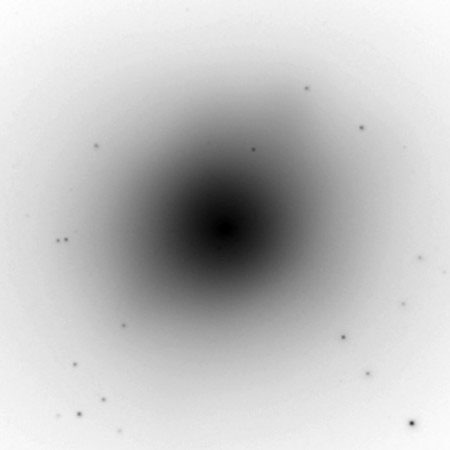How much does a supermassive black hole weigh? US astronomers think they have the answer. Two independent techniques have been used to weigh one of the biggest black holes in the known universe, the supermassive body at the centre of the giant elliptical galaxy NGC 4649. It turns out that this object has a mass 3.4 billion times that of the Sun.
Researchers at the University of California Irvine and colleagues have used data from NASA’s Chandra X-ray Observatory to measure a peak in the temperature of hot gas at the centre of NGC 4649. This is the first time a cosmic weigh-in has been carried out using this technique.

Supermassive black hole
This is tremendously important work since black holes can be elusive, and there are only a couple of ways to weigh them accurately, explains study leader Philip Humphrey of UCI who worked on the project with David Buote and others.
Astronomers have been seeking redundancy in their measurements of supermassive black holes for several years. Having at least two different, independent methods of determining the mass provides stronger evidence for these galactic objects. Until now, methods based on observing the motions of stars or of gas in a disc near such large black holes have been the commonly used methods.
NGC 4649 is now one of only a handful of galaxies for which the mass of a supermassive black hole has been measured with two different methods. It is reassuring that two very different ways to measure the mass of a big black hole give such similar answers, Humphrey adds.
In addition, this new X-ray technique confirms that the supermassive black hole in NGC 4649 is one of the largest in the local universe with a mass about 3.4 billion times that of the Sun, about 1,000 times bigger than the black hole at the centre of our Milky Way galaxy.
The new technique takes advantage of the gravitational influence the black hole has on the hot gas near the centre of the galaxy. As gas slowly settles towards the black hole, it gets compressed and heated. This causes a peak in the temperature of the gas very near the centre of the galaxy. The more massive the black hole, the bigger the temperature peak detected by Chandra.
The effect was first predicted by Fabrizio Brighenti from the University of Bologna, Italy and William Mathews from the University of California, Santa Cruz almost a decade ago, but this is the first time it has been seen and used. It was wonderful to finally see convincing evidence of the effects of the huge black hole that we expected, Brighenti enthuses, We were thrilled that our new technique worked just as well as the more traditional approach for weighing the black hole.
Further reading
Astrophys. J., 2008, in press
http://arxiv.org/abs/0801.3461
David A. Buote
http://www.physics.uci.edu/~dbuote/
Chandra X-ray Center
http://chandra.harvard.edu/
UC Irvine Department of Physics & Astronomy
http://www.physics.uci.edu/
NASA – Exploring the Invisible Universe: Chandra X-ray Observatory
http://www.nasa.gov/mission_pages/chandra/main/index.html
Suggested searches
black holes